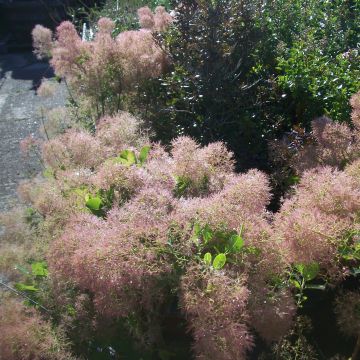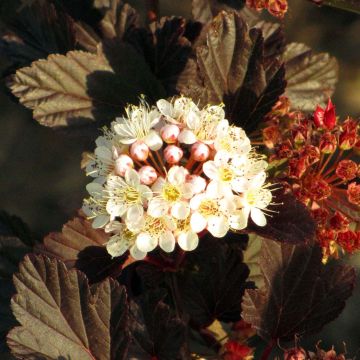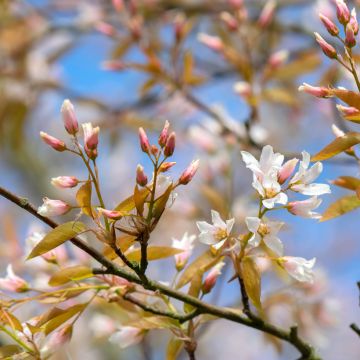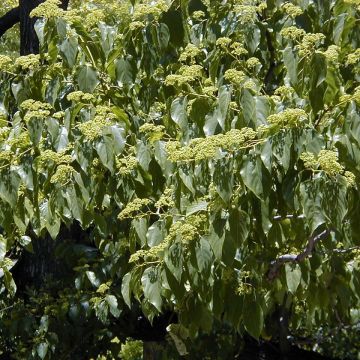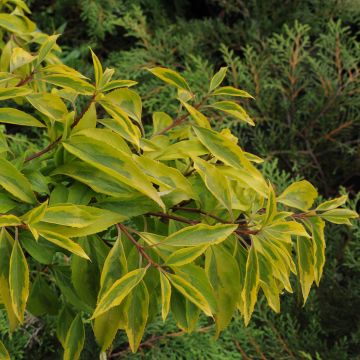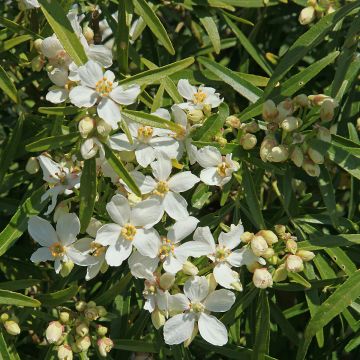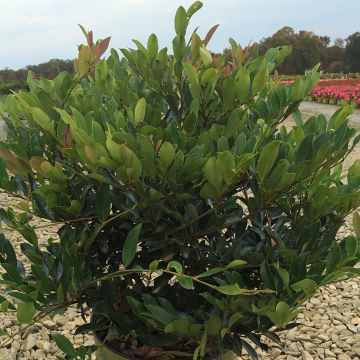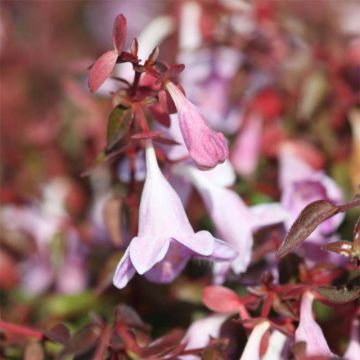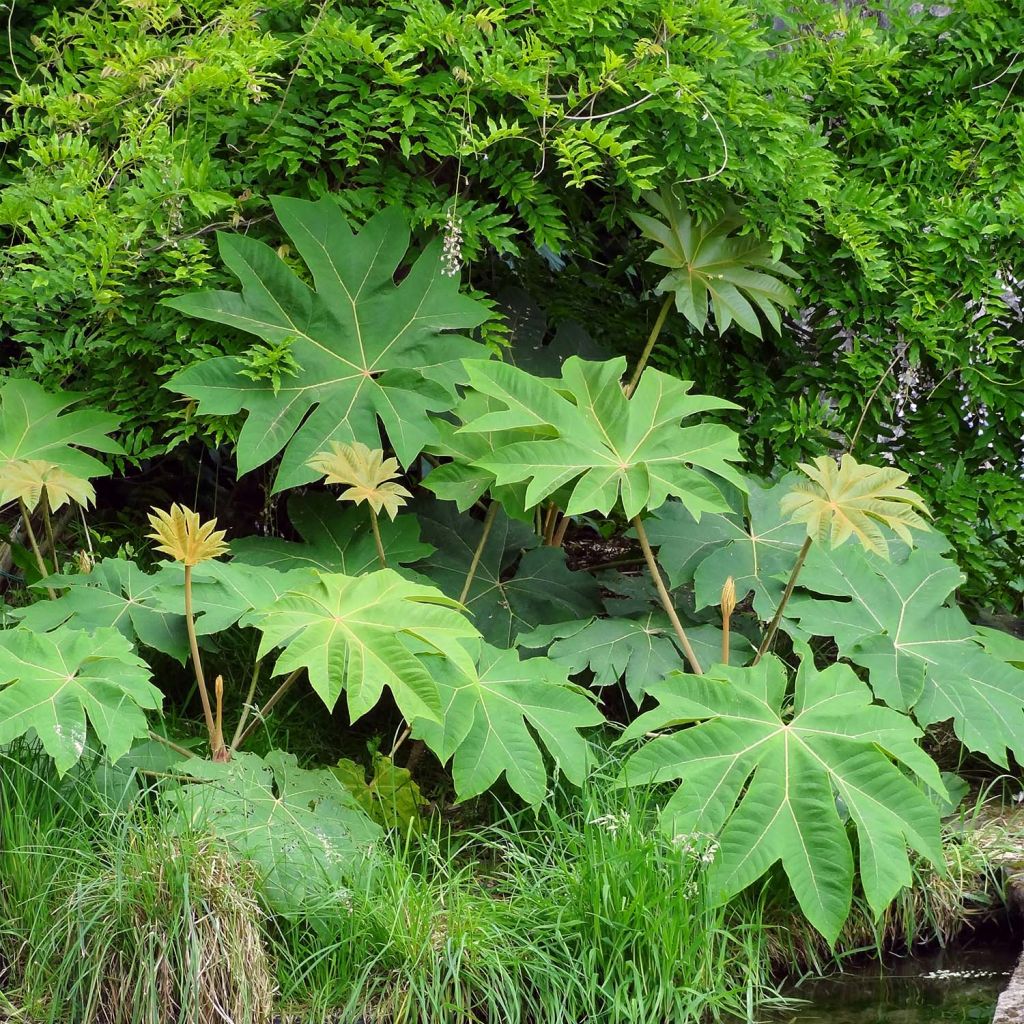

Tetrapanax papyrifera Rex - Chinese rice-paper Plant
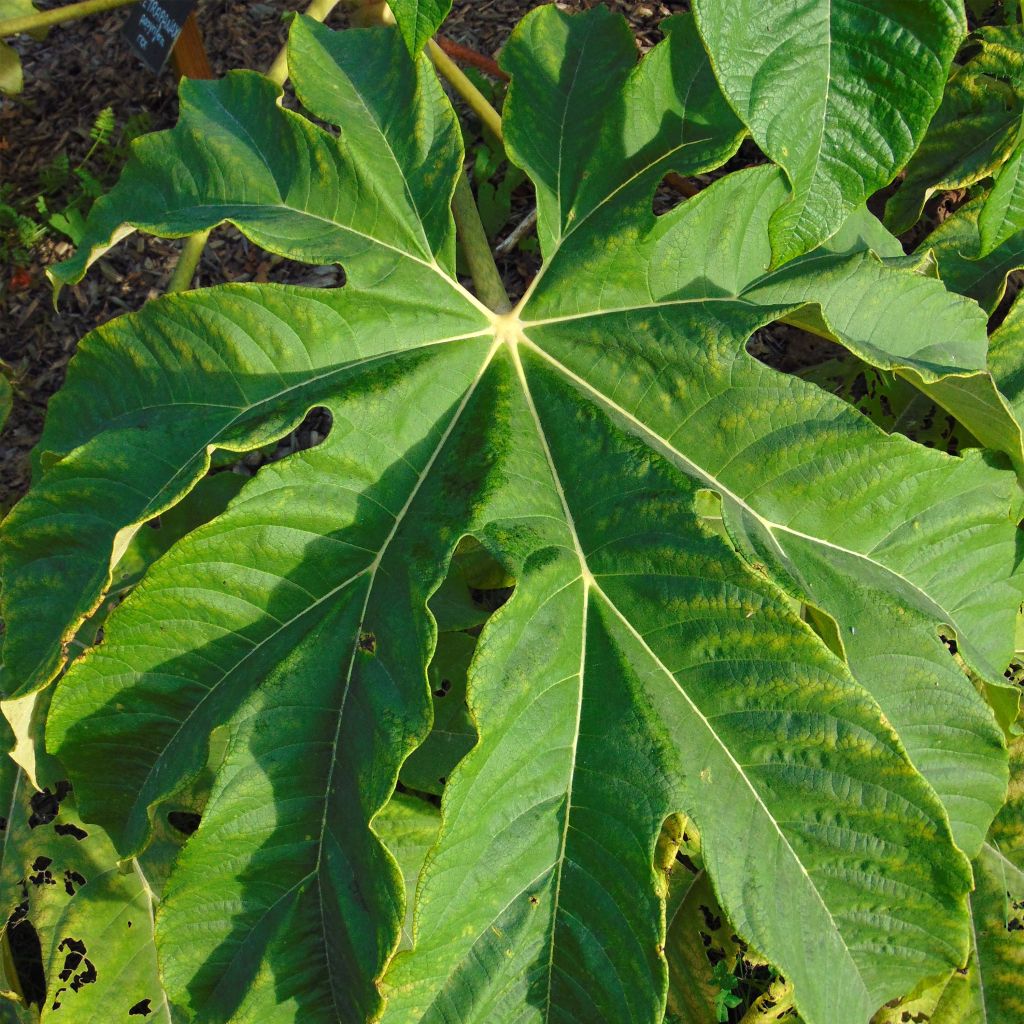

Tetrapanax papyrifera Rex - Chinese rice-paper Plant
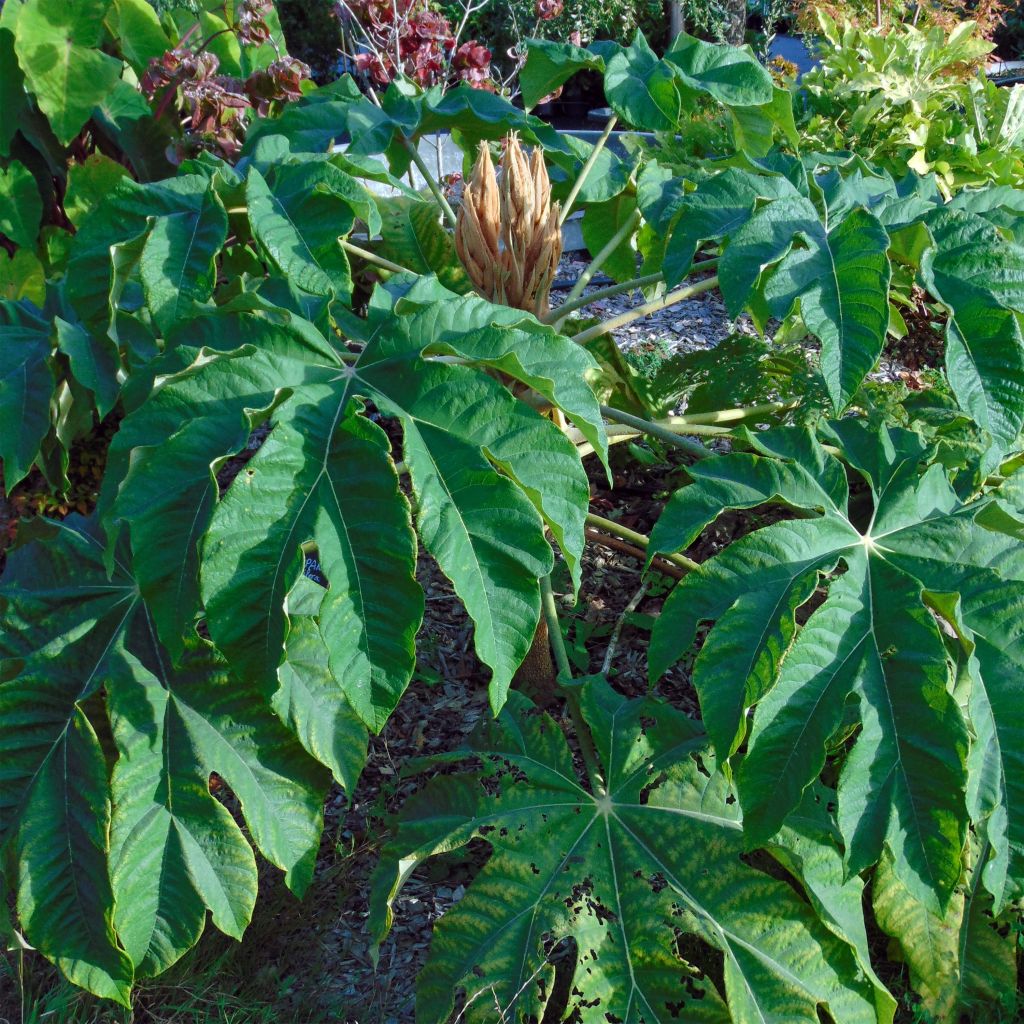

Tetrapanax papyrifera Rex - Chinese rice-paper Plant
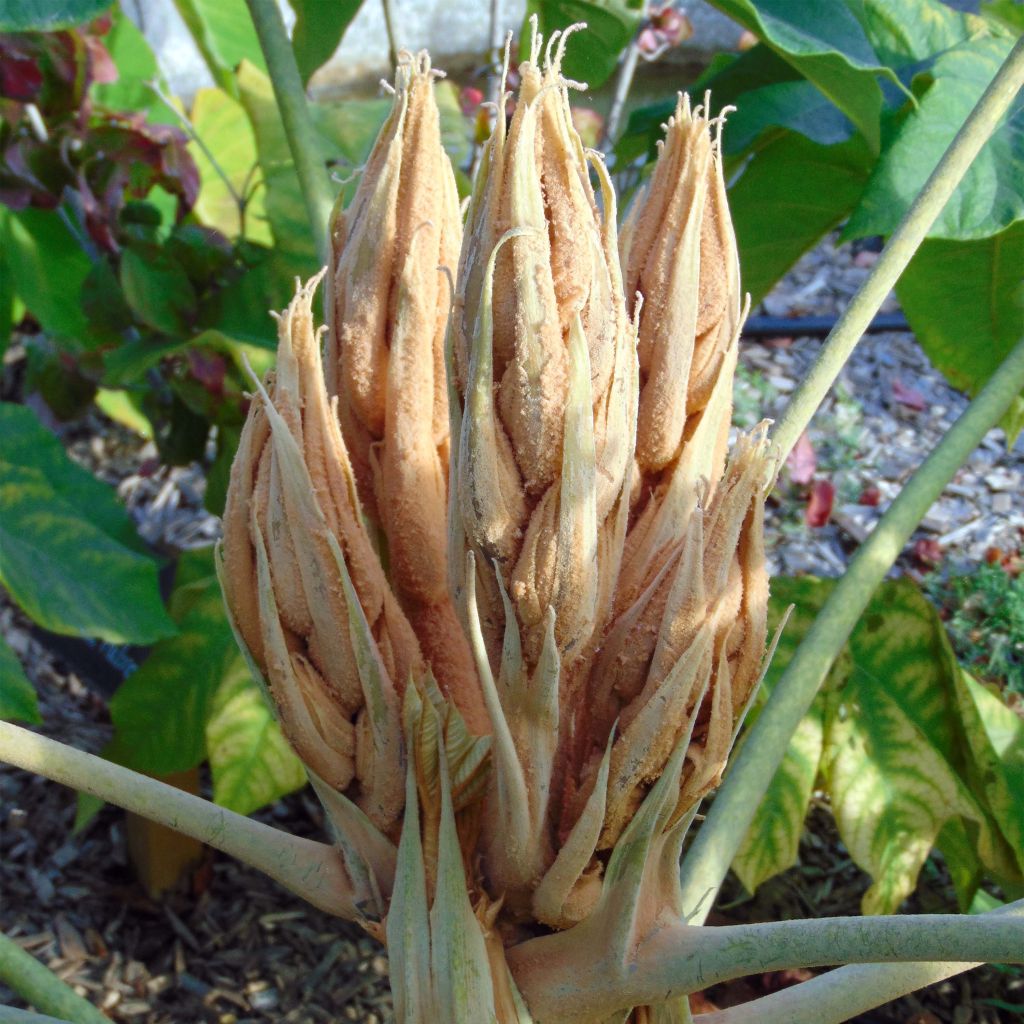

Tetrapanax papyrifera Rex - Chinese rice-paper Plant
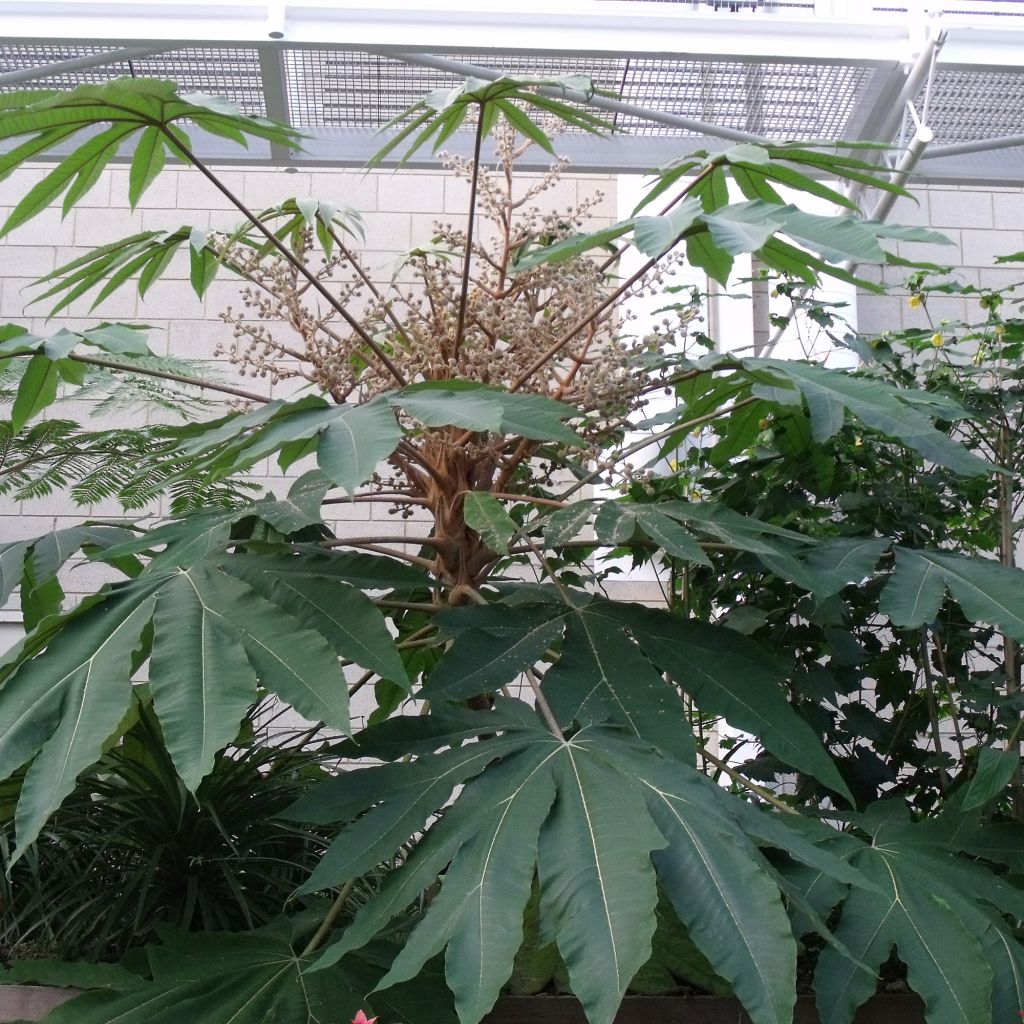

Tetrapanax papyrifera Rex - Chinese rice-paper Plant
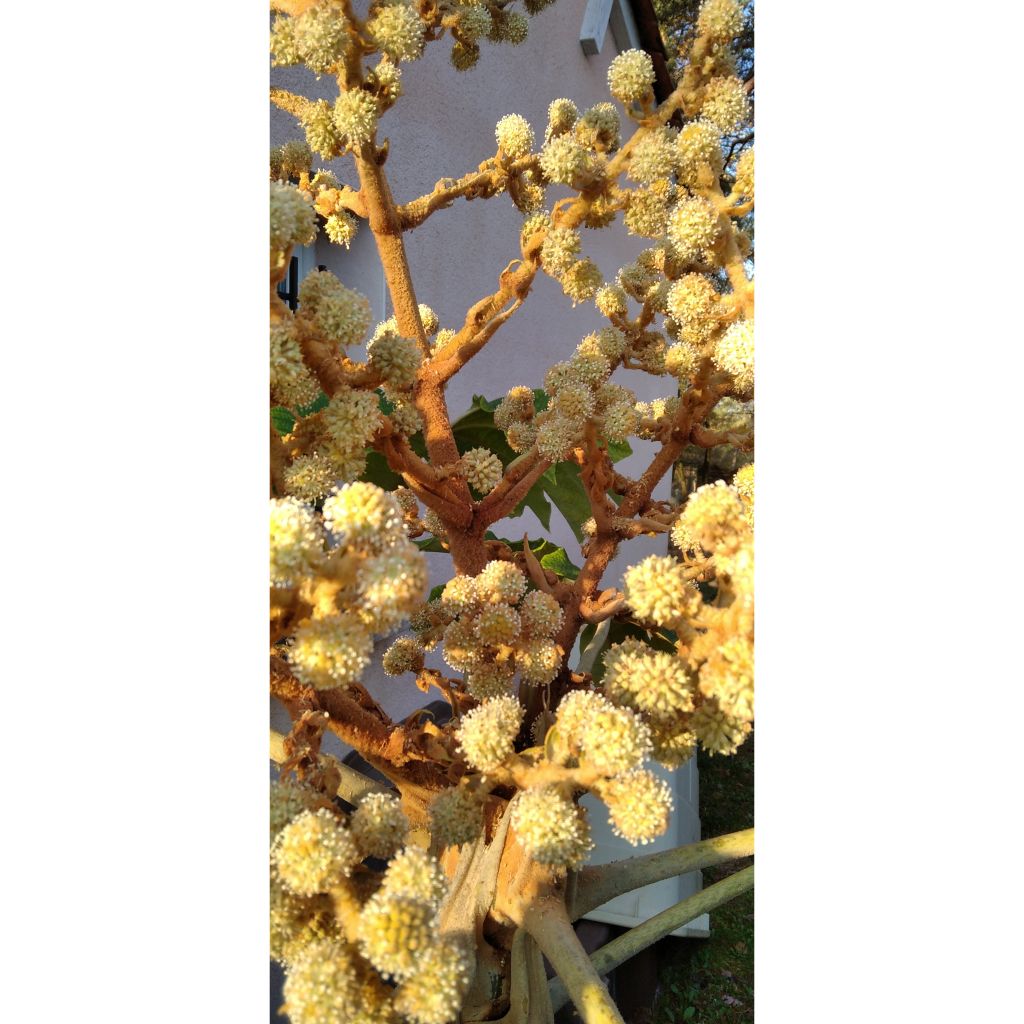

Tetrapanax papyrifera Rex - Chinese rice-paper Plant
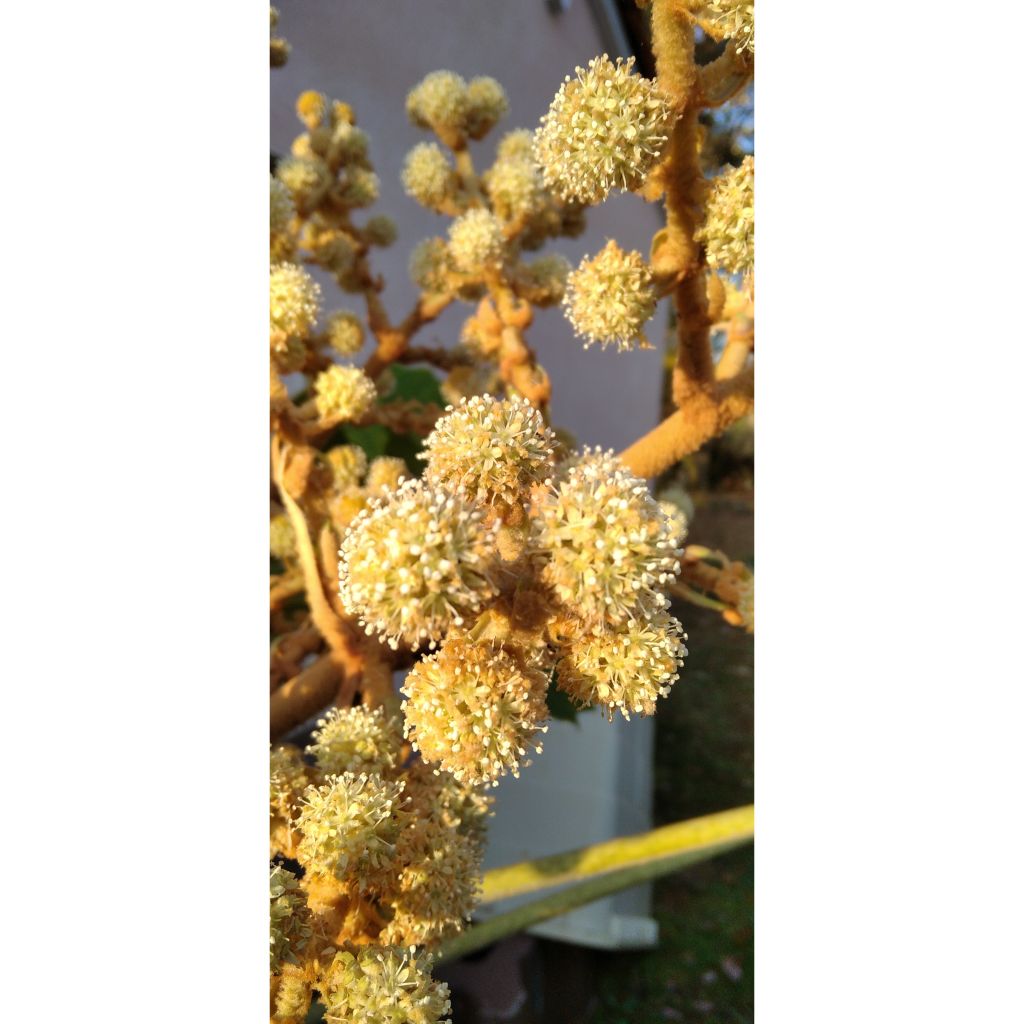

Tetrapanax papyrifera Rex - Chinese rice-paper Plant
Tetrapanax papyrifera Rex - Chinese rice-paper Plant
Tetrapanax papyrifera Rex
Chinese rice-paper Plant
This item cannot be shipped to the selected country
Delivery charge from €5.90
Delivery charge from €5.90
Delivery charge from €5.90
More information
Schedule delivery date,
and select date in basket
This plant carries a 24 months recovery warranty
More information
We guarantee the quality of our plants for a full growing cycle, and will replace at our expense any plant that fails to recover under normal climatic and planting conditions.
From €5.90 for pickup delivery and €6.90 for home delivery
Express home delivery from €8.90.
From €5.90 for pickup delivery and €6.90 for home delivery
Express home delivery from €8.90.
From €5.90 for pickup delivery and €6.90 for home delivery
Express home delivery from €8.90.


Does this plant fit my garden?
Set up your Plantfit profile →
Description
Tetrapanax papyrifera 'Rex', also known as Rice Paper Plant, is a strange, exotic, and exuberant Asian plant. Part bush and part perennial, it can form a small tree in mild climates, with its sparsely branched trunk sheltered under a large parasol composed of immense beautifully cut leaves, of a velvety green-grey colour. Its discreet but highly honeyed flowering takes the form of clusters of small white flowers in late summer. Suckering, it can sometimes become invasive under the right conditions. Hardy to -10°C, it regrows from the base in spring after strong frosts. This endearing plant thrives in non-burning sun or partial shade in well-draining, fertile soil that is preferably moist to occasionally dry, both in the ground and in pots.
Tetrapanax papyrifera 'Rex', formerly known as Aralia papyrifera or Fatsia papyrifera, belongs to the Araliaceae family. Tetrapanax papyrifera is the only species in this genus related to Aralias; it is native to southern China, Japan, and Taiwan. It is a large perennial shrub that forms a sparsely branched small shrub in one season, reaching a height of 1.50m (4ft 11in) to 4m (13ft 1in), and a spread of 1m (3ft 4in) to 3m (9ft 10in), depending on the method of cultivation and the climate. In spring, the young branches are covered with a brownish to whitish down. They produce young shoots covered with a brown and silvery pubescence, which unfold into giant leaves, 50 to 80cm (31.5in) in diameter. Carried by long petioles and arranged in a fan shape, the leaves are divided into 9 to 11 lobes, slightly velvety on the upper side, very pubescent underneath, and strongly veined. In September, large loose panicles appear, bearing small creamy-white pompom-like flowers, followed by small black drupes. Tetrapanax has a trailing and powerful rootstock, and like some bamboos, it will be necessary to take precautions to prevent it from spreading too far beyond the allotted boundaries (cultivation in large pots, anti-rhizome barriers). The aboveground parts of this plant are destroyed at -5°C, but it regrows from the stump beyond -10°C once well established.
Its habit resembles a parasol, and its evergreen palmate leaves give Tetrapanax 'Rex' a perfectly exotic appearance in mild climates. It withstands sea spray well and is therefore suitable for coastal gardens. For ornamentation in a semi-shaded courtyard, patio, or corner of a terrace, it is almost irreplaceable. It can also be planted within a mass planting of tropical-looking but hardy plants, such as banana trees, Beschorneria yuccoides, Melianthus major, Chamaerops humilis, Cordylines, Agaves, or Yuccas. Cultivation in large pots is recommended in very cold regions, with careful monitoring of watering. It can also be planted as a standalone specimen, creating a magnificent focal point. As an architectural and structural plant, it can mark a pathway or the entrance to a house.
Usage: Its name Rice Paper Plant comes from the white pith that forms in the lignified stems. It is used for the production of authentic rice paper, which has been made in China for a long time.
Report an error about the product description
Tetrapanax papyrifera Rex - Chinese rice-paper Plant in pictures




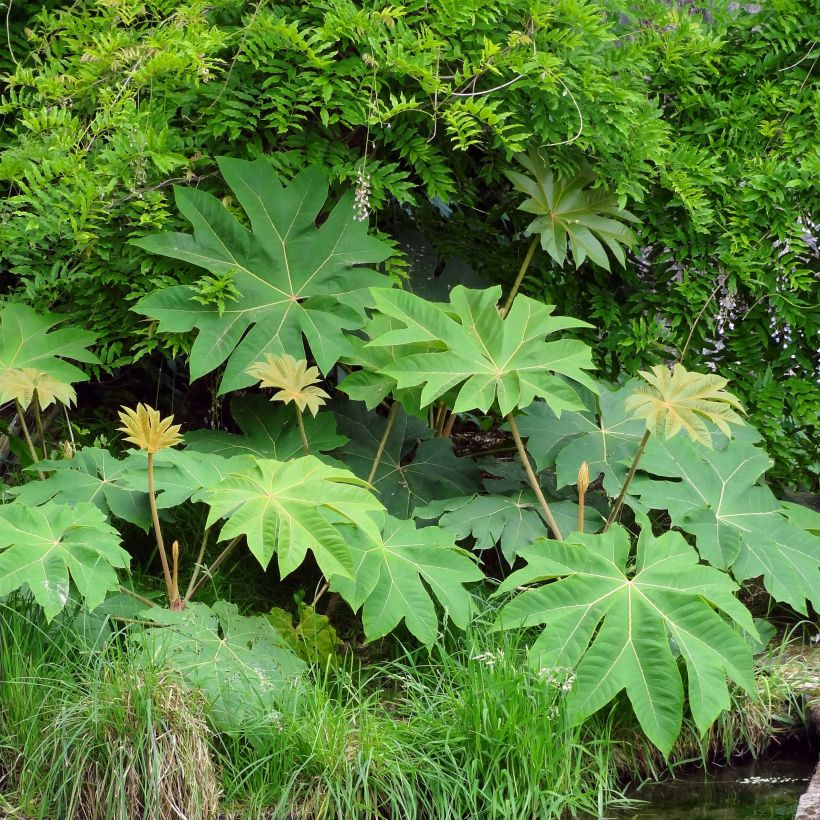

Plant habit
Flowering
Foliage
Botanical data
Tetrapanax
papyrifera
Rex
Araliaceae
Chinese rice-paper Plant
Southeast Asia
Planting and care
Planting Tetrapanax 'Rex' is done in spring in cold climates or in autumn in mild climates. It prefers deep and fertile soils, but loose and well-drained, moist in summer and dry in winter. Choose a semi-shaded and sheltered location as the wind can tear the leaves and the midday sun can scorch them. Soak the root ball in water for a few moments before planting. Dig a hole (3 times the volume of the root ball), place a layer of gravel at the bottom to facilitate drainage. Cover with a mixture of garden soil, compost or potting soil, and sand, place the root ball and cover with soil. Firmly compact and water generously. In spring and summer, regularly apply organic fertilizer. Regularly water in summer during prolonged drought, at least for the first two years. In cold climates, cover the stump with a thick layer of mulch to protect it from the cold and humidity.
No parasites to report. The roots can rot in overly wet soil. This plant requires very little maintenance; however, be careful of suckers that can be invasive, remove shoots or use anti-rhizome barriers if necessary. Cultivate it in a large pot.
Planting period
Intended location
Care
-
, onOrder confirmed
Reply from on Promesse de fleurs
Striking foliage shrubs
Haven't found what you were looking for?
Hardiness is the lowest winter temperature a plant can endure without suffering serious damage or even dying. However, hardiness is affected by location (a sheltered area, such as a patio), protection (winter cover) and soil type (hardiness is improved by well-drained soil).

Photo Sharing Terms & Conditions
In order to encourage gardeners to interact and share their experiences, Promesse de fleurs offers various media enabling content to be uploaded onto its Site - in particular via the ‘Photo sharing’ module.
The User agrees to refrain from:
- Posting any content that is illegal, prejudicial, insulting, racist, inciteful to hatred, revisionist, contrary to public decency, that infringes on privacy or on the privacy rights of third parties, in particular the publicity rights of persons and goods, intellectual property rights, or the right to privacy.
- Submitting content on behalf of a third party;
- Impersonate the identity of a third party and/or publish any personal information about a third party;
In general, the User undertakes to refrain from any unethical behaviour.
All Content (in particular text, comments, files, images, photos, videos, creative works, etc.), which may be subject to property or intellectual property rights, image or other private rights, shall remain the property of the User, subject to the limited rights granted by the terms of the licence granted by Promesse de fleurs as stated below. Users are at liberty to publish or not to publish such Content on the Site, notably via the ‘Photo Sharing’ facility, and accept that this Content shall be made public and freely accessible, notably on the Internet.
Users further acknowledge, undertake to have ,and guarantee that they hold all necessary rights and permissions to publish such material on the Site, in particular with regard to the legislation in force pertaining to any privacy, property, intellectual property, image, or contractual rights, or rights of any other nature. By publishing such Content on the Site, Users acknowledge accepting full liability as publishers of the Content within the meaning of the law, and grant Promesse de fleurs, free of charge, an inclusive, worldwide licence for the said Content for the entire duration of its publication, including all reproduction, representation, up/downloading, displaying, performing, transmission, and storage rights.
Users also grant permission for their name to be linked to the Content and accept that this link may not always be made available.
By engaging in posting material, Users consent to their Content becoming automatically accessible on the Internet, in particular on other sites and/or blogs and/or web pages of the Promesse de fleurs site, including in particular social pages and the Promesse de fleurs catalogue.
Users may secure the removal of entrusted content free of charge by issuing a simple request via our contact form.
The flowering period indicated on our website applies to countries and regions located in USDA zone 8 (France, the United Kingdom, Ireland, the Netherlands, etc.)
It will vary according to where you live:
- In zones 9 to 10 (Italy, Spain, Greece, etc.), flowering will occur about 2 to 4 weeks earlier.
- In zones 6 to 7 (Germany, Poland, Slovenia, and lower mountainous regions), flowering will be delayed by 2 to 3 weeks.
- In zone 5 (Central Europe, Scandinavia), blooming will be delayed by 3 to 5 weeks.
In temperate climates, pruning of spring-flowering shrubs (forsythia, spireas, etc.) should be done just after flowering.
Pruning of summer-flowering shrubs (Indian Lilac, Perovskia, etc.) can be done in winter or spring.
In cold regions as well as with frost-sensitive plants, avoid pruning too early when severe frosts may still occur.
The planting period indicated on our website applies to countries and regions located in USDA zone 8 (France, United Kingdom, Ireland, Netherlands).
It will vary according to where you live:
- In Mediterranean zones (Marseille, Madrid, Milan, etc.), autumn and winter are the best planting periods.
- In continental zones (Strasbourg, Munich, Vienna, etc.), delay planting by 2 to 3 weeks in spring and bring it forward by 2 to 4 weeks in autumn.
- In mountainous regions (the Alps, Pyrenees, Carpathians, etc.), it is best to plant in late spring (May-June) or late summer (August-September).
The harvesting period indicated on our website applies to countries and regions in USDA zone 8 (France, England, Ireland, the Netherlands).
In colder areas (Scandinavia, Poland, Austria...) fruit and vegetable harvests are likely to be delayed by 3-4 weeks.
In warmer areas (Italy, Spain, Greece, etc.), harvesting will probably take place earlier, depending on weather conditions.
The sowing periods indicated on our website apply to countries and regions within USDA Zone 8 (France, UK, Ireland, Netherlands).
In colder areas (Scandinavia, Poland, Austria...), delay any outdoor sowing by 3-4 weeks, or sow under glass.
In warmer climes (Italy, Spain, Greece, etc.), bring outdoor sowing forward by a few weeks.




































